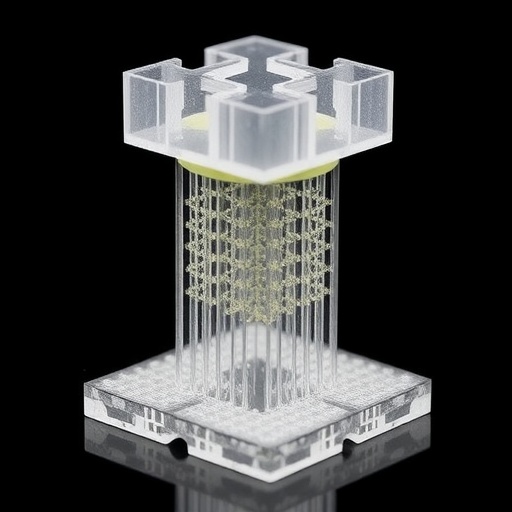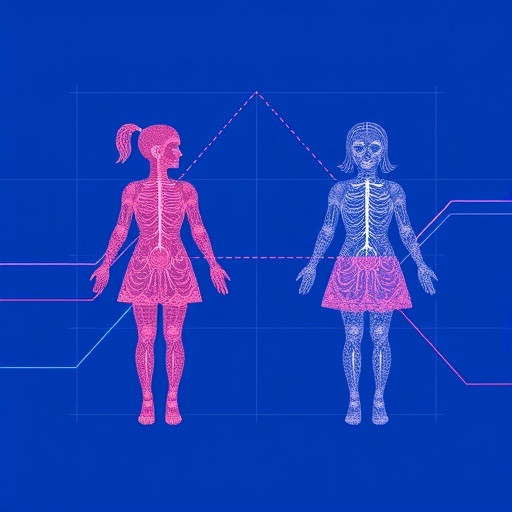In the ongoing battle against air pollution, one of the most significant challenges faced by conventional filtration technologies lies in their vulnerability to particulate matter (PM) resuspension. Traditional filters, though effective at capturing airborne particles, often suffer from the unintended release of these contaminants back into the environment, especially under variable airflow conditions. Recent pioneering research introduces a groundbreaking approach that promises to revolutionize particulate filtration: a bioinspired capillary force-driven super-adhesive filter (PRO filter) that ensures robust particle capture while maintaining its integrity under multidirectional airflow without requiring external energy inputs.
At the heart of conventional filtration lies the issue of PM dislodgement caused by external forces such as airflow reversals or air jets. When air is forced through typical filters, for example using an air gun, trapped particles easily detach due to insufficient adhesive forces, resulting in the problematic resuspension of PM into the surrounding air. This phenomenon has been elegantly visualized through high-speed imaging techniques, which capture the moment particulate matter breaks free from filter surfaces under airflow stress. Scanning electron microscopy (SEM) further corroborates these observations by revealing the post-blow detachment of particles, confirming the transient nature of conventional filtration efficacy.
In stark contrast, the PRO filter employs a novel mechanism inspired by biological systems that leverage capillary forces to firmly anchor particulates upon capture. This super-adhesive quality creates a fundamental shift in filtration dynamics, enabling the retention of even aggressive airborne particles despite exposure to opposing or fluctuating airflow conditions. High-resolution imaging and supplementary video documentation have demonstrated that even when subjected to the identical air blasting conditions that dismantle particles from conventional filters, the PRO filter consistently retains its filtered PM load without noticeable changes in appearance or performance metrics.
.adsslot_ojFTOvfUVm{ width:728px !important; height:90px !important; }
@media (max-width:1199px) { .adsslot_ojFTOvfUVm{ width:468px !important; height:60px !important; } }
@media (max-width:767px) { .adsslot_ojFTOvfUVm{ width:320px !important; height:50px !important; } }
ADVERTISEMENT
One of the revolutionary implications of this advancement is the filter’s capacity to operate under multidirectional airflow— a previously unattainable feat in standard filtration systems. Traditional filters are typically designed to handle unidirectional air streams precisely because any reversal or turbulence leads to particle resuspension, severely limiting their practical use in dynamic environments. The PRO filter’s architecture and adhesion principles allow it to function efficiently regardless of airflow direction, expanding its potential applicability in real-world scenarios where controlled airflow cannot be guaranteed.
Experiments designed to test this multidirectional capability involved sequential filtration cycles in reverse orientations. After capturing particulate matter in a forward pass, the PRO filter was inverted and exposed to an equivalent concentration of PM from the opposite direction. Remarkably, measurements of filter weight before and after these cycles revealed nearly identical particle accumulation, confirming that the filter resisted any meaningful loss of captured PM due to detachment or resuspension. Furthermore, these filtration cycles were repeatable beyond five iterations without any decline in adhesion quality or particle retention efficiency.
The implications for environmental monitoring hubs and public spaces are profound. Field tests conducted in an outdoor smoking area— a notoriously challenging setting due to variable wind and aerosolized tobacco residue— underscored the filter’s superior performance. After more than three years of continuous passive exposure, a conventional bare filter was found to carry very few retained particles, primarily due to the persistent resuspension caused by wind agitation. Additionally, the bare filter’s brown coloration was largely attributable to superficial staining from tobacco aerosols rather than true particulate capture.
Conversely, filters incorporating the PRO technology accumulated extensive particulate bundles within their structure, visibly apparent in SEM imaging and through distinct color changes linked to captured material density. The dark brown hue of the PRO filters attested not only to the quantity of particles held but also to their deep integration into the filter matrix facilitated by capillary adhesion forces. These passive filters showcased their capacity for zero-energy operation, meaning they function effectively without reliance on powered air movement systems or maintenance-intensive interventions.
This breakthrough represents the first demonstrable instance of a multidirectional filtration strategy explicitly targeting particle immobilization while harnessing ambient natural wind currents as the driving force. By eliminating the need for external energy consumption, this innovation promises new pathways for scalable, sustainable air quality improvement technologies adaptable to a range of environmental contexts. The bioinspired design roots itself in nature’s efficient methods of fluid and particle adhesion, translating complex biological principles into practical engineering solutions suitable for mass production and deployment.
The biomedical and environmental sciences communities alike have expressed keen interest in the potential for these PRO filters to augment existing air purification infrastructure, especially in densely populated urban centers where particulate pollution contributes significantly to respiratory ailments and overall morbidity. The ability to seamlessly integrate a filter that withstands multidirectional airflow without losing captured contaminants can dramatically enhance the effectiveness of air filtration systems installed in transportation hubs, industrial facilities, and residential areas alike.
Importantly, the scientific study underpinning these findings rigorously quantified particle adhesion and resuspension through multi-modal imaging techniques and weight measurement protocols, ensuring robust validation of claims and opening doors for further optimization of filter materials and configurations. Beyond air quality applications, these findings have potential cross-disciplinary relevance, including contamination control in cleanrooms, pharmaceutical manufacturing, and even agricultural settings where particulate manipulation plays a crucial role.
While questions remain about the long-term durability of these filters under varying climatic and particulate load scenarios, preliminary data suggests exceptional stability and minimal degradation over extended periods. Future research trajectories may explore integration with sensor technologies for real-time pollutant monitoring or coupling with electrostatic enhancements to target specific classes of airborne particulates and pathogens.
In conclusion, the development of this bioinspired capillary force-driven super-adhesive filter marks a paradigm shift in particulate matter filtration science. By overcoming longstanding limitations associated with particle resuspension and unidirectional airflow dependency, this innovative technology offers a promising route toward truly energy-efficient, multidirectional air purification. Its application potential spans environmental, industrial, and public health domains, heralding a new era of smarter and more sustainable filtration solutions that align closely with the principles of biomimicry and ecological harmony.
Subject of Research: Advanced particulate matter filtration using bioinspired capillary force adhesion
Article Title: Bioinspired capillary force-driven super-adhesive filter
Article References:
Park, J., Moon, C.S., Lee, J.M. et al. Bioinspired capillary force-driven super-adhesive filter.
Nature (2025). https://doi.org/10.1038/s41586-025-09156-y
Image Credits: AI Generated
Tags: air pollution solutionsbioinspired filtration technologycapillary force-driven filtrationconventional filter limitationsexternal energy-free filtrationhigh-speed imaging in filtration researchinnovative air filtration methodsmultidirectional airflow stabilityparticulate matter captureresuspension of airborne particlesscanning electron microscopy in filter analysissuper-adhesive filter design





